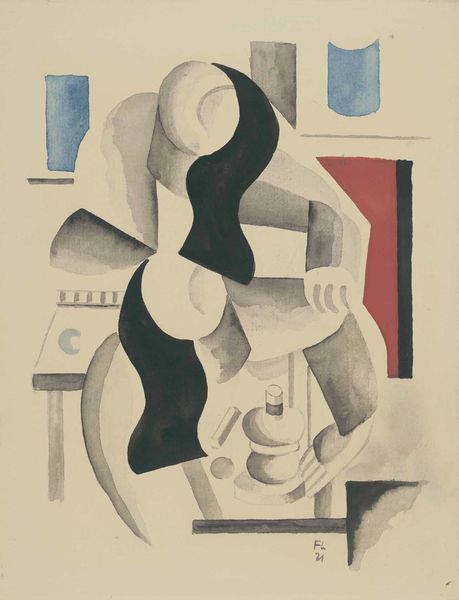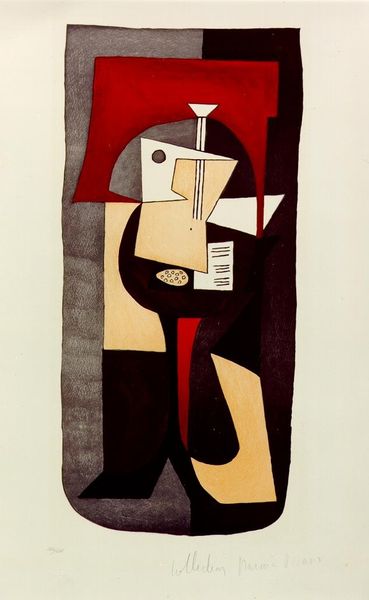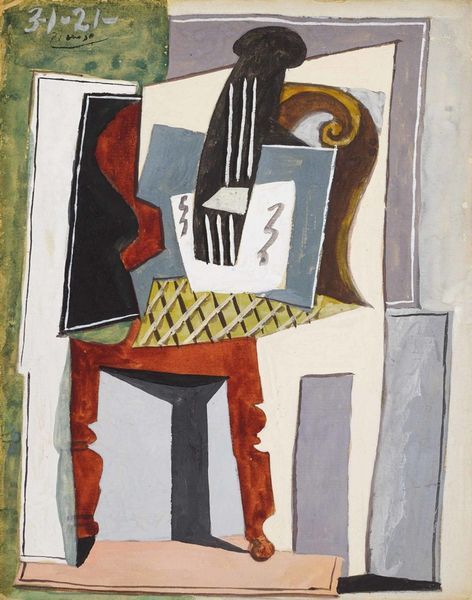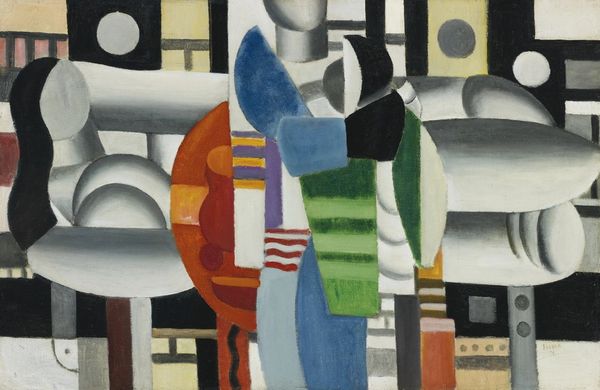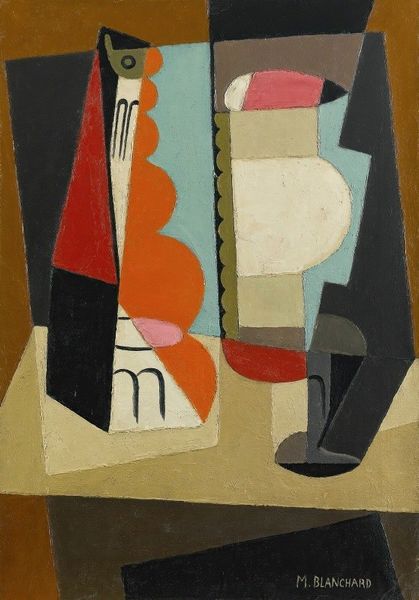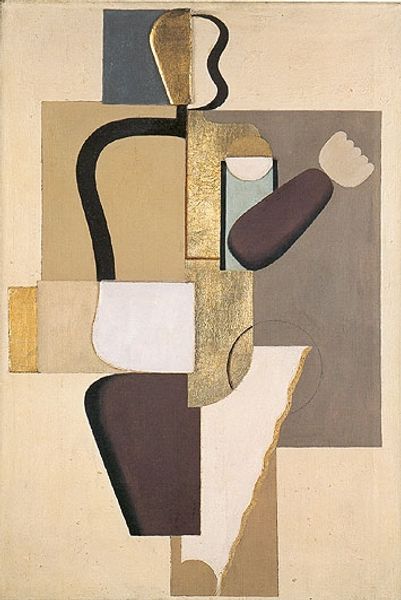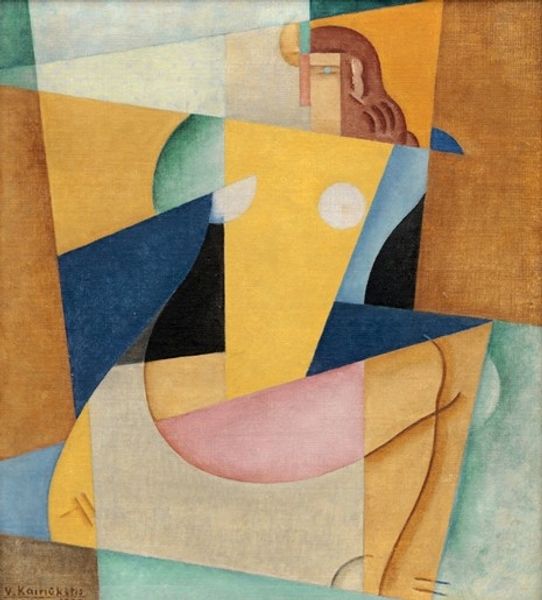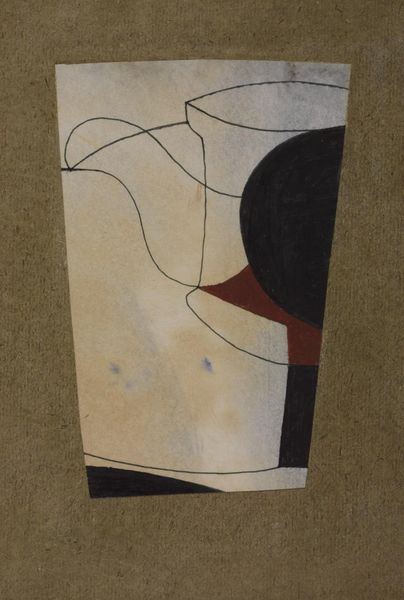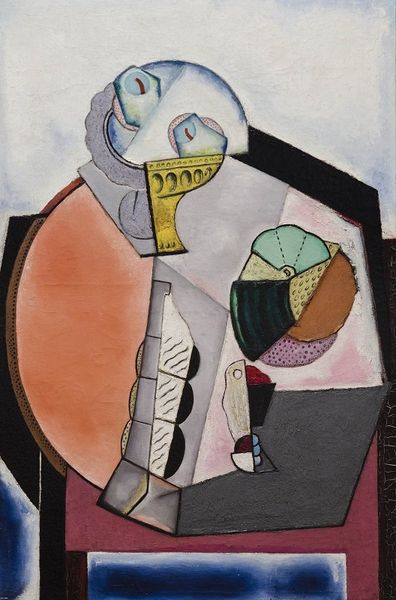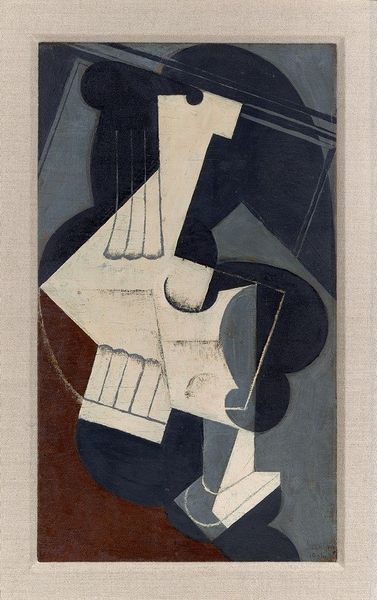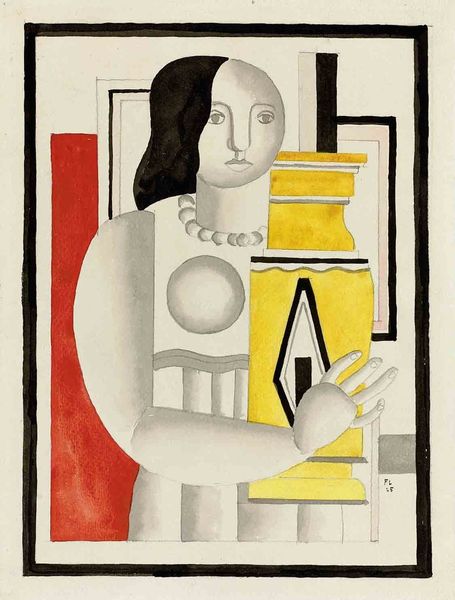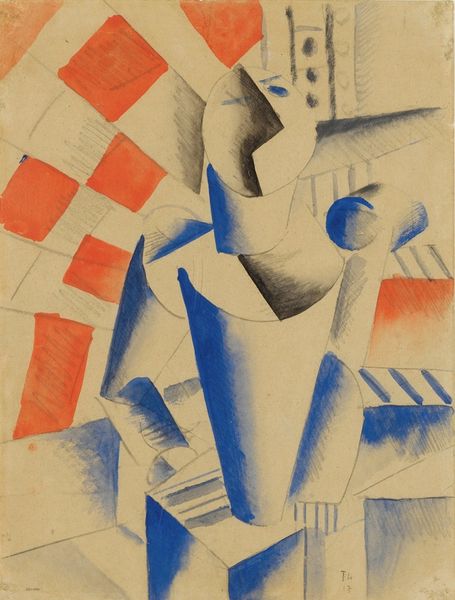
painting, watercolor
#
portrait
#
cubism
#
painting
#
figuration
#
abstract
#
watercolor
Copyright: Modern Artists: Artvee
Editor: Here we have Fernand Léger's "Personnage dans un intérieur," from 1920. It’s a watercolor painting, mostly in muted reds, yellows, and greys, and the composition is almost entirely abstract shapes that loosely suggest a human figure. I'm curious, what stands out to you when you look at it? Curator: For me, it’s fascinating to consider the materials and methods used to create this "Personnage". Léger used watercolor to depict an interior space in a mechanized world. Watercolors can often suggest transience or delicacy, but Léger harnessed the medium to build very stable, almost industrial, geometric shapes. It challenges that old divide between craft and fine art by exploring industrial subjects through techniques we may think of as craft-related, even feminine. Editor: I see what you mean. How does that relate to the social context? Curator: The 1920s were a time of reconstruction after the devastation of World War I. Mass production and technological advancements were rapidly changing the fabric of society, from domestic to international structures. Léger’s rendering reflects an engagement with mass production through simplified, repeated shapes, like components. It suggests that Léger recognized that even intimate spaces like interiors, and by extension the body within, were being reshaped by these social and material forces. He even seems to mimic, materially, the mass reproducibility that industrial materials allow by using such a readily available medium as watercolor. Editor: That's a perspective I hadn't considered. I was so focused on the artistic style, I overlooked the impact of the social landscape on the creation and materials. Curator: Art is rarely just about pure aesthetics. Considering the materiality of production reveals how the social landscape can fundamentally alter both how and why art is created.
Comments
No comments
Be the first to comment and join the conversation on the ultimate creative platform.
